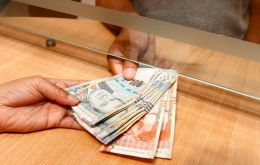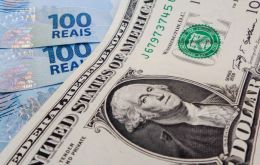MercoPress. South Atlantic News Agency
Tag: South American currencies
-
Saturday, August 21st 2021 - 09:20 UTC
Investors wary of South American debt in local currencies

South American debt in local currency has become a painful experience for international investors, with little signals of relief and reversal of the situation.
-
Friday, May 3rd 2019 - 11:46 UTC
Latin American currencies softened against a strong US dollar following the Fed's two days meeting

Latin American currencies softened against a stronger U.S. dollar on Thursday, a day after the U.S. Federal Reserve kept interest rates steady, while most regional stock markets broadly fell along with their global peers.
-
Wednesday, May 9th 2018 - 07:10 UTC
Latin American (and global) currencies hit by strong dollar and Trump's policies

The dollar hovered near a four-month high on Tuesday, continuing to draw support from higher Treasury yields and upbeat prospects for the U.S. economy, leaving its major rivals such as the Euro struggling and other Latin American currencies including the Argentine peso down sharply.
-
Wednesday, December 10th 2014 - 07:56 UTC
Weaker Latin American currencies against the US dollar next year

Latin American currencies will lose value against the US dollar in 2015 because of the strong US recovery and lower commodities' prices according to Itau-Unibanco, Brazil's largest private bank which also anticipates a strong fiscal adjustment by President Dilma Rousseff's next administration, in an effort to regain investors' 'confidence'.
-
Thursday, April 7th 2011 - 10:11 UTC
Uruguay’s public debt to abandon foreign currencies for local Pesos

Uruguay this year plans to swap part of its foreign-currency bonds for debt denominated in Pesos, said Economy Minister Fernando Lorenzo. Uruguay will also sell Peso securities and use the proceeds to pay off bonds denominated in other currencies, Lorenzo said without providing further details.
